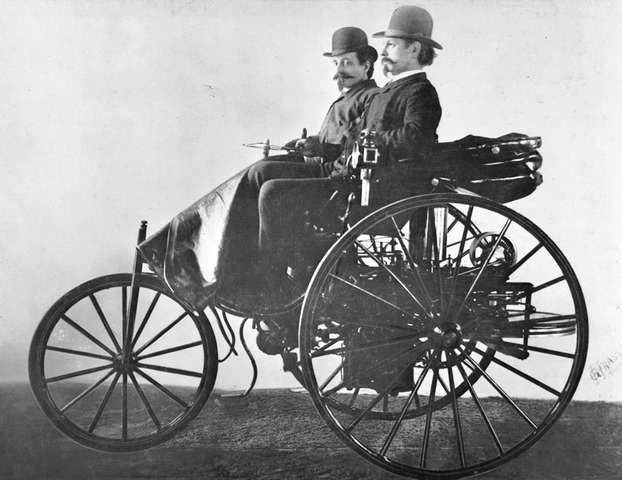Driving an automobile, like many of the tasks we do daily and unthinkingly while overlooking the complexity, is performed through numerous smaller skills all interwoven to allow us to properly control a couple of tons of steel and complete tasks far beyond what we could accomplish without. Think of all the things you use your car to do. Drive the kids to this, drive the kids to that. Maybe you even get to use the car for yourself every once in a while (like driving to the grocery store!)
Now think of all the things you do while actively driving your car. That you can come up with a list of things you can do while driving is a direct reflection of how driving becomes habit.

Do you remember when you first learned to drive? I attached a photo of myself learning to drive for the first time above. The power within the pressure of the accelerator, or the brakes, might have led to some herky-jerky driving moments at first - even more so if you learned to drive on a manual transmission. As driving became more familiar you were able to focus on other parts of the experience: music, conversation, the sounds the car makes. At first, though, most of your brainpower went towards the road and the situation.
The key features to control the vehicle have not changed since cars were first introduced to the road, but today’s drivers approach the activity with far more distraction than ever before. The National Highway Transportation Safety Association, focusing specifically on teen drivers (who have accidents at the highest rate), has a “5 to Drive” plan addressing the need to be attentive to the task of driving. Here’s the list:
- No cell phones while driving
- No extra passengers
- No speeding
- No alcohol
- No driving or riding without a seat belt
Teen drivers more likely than any other group to be involved in an accident. As much as we embrace and encourage families to use the “5 to Drive” and have conversations concerning practices of safe driving, we also must remember that we are always a role model for anyone who is driving in our vehicle, and that learning starts through observation. Obviously, the 5 to drive will not apply on all rules - you are certainly going to have passengers - but see how you do with the other four and embrace the behavior you want to see in those around you.
To learn more about preventing driving incidents for teens, follow the link here to the CDC's information on the topic. Click the image below if you think Joffe may be able to help with your safety needs!
Subscribe to our blog below so that you can be the first to read our posts!


